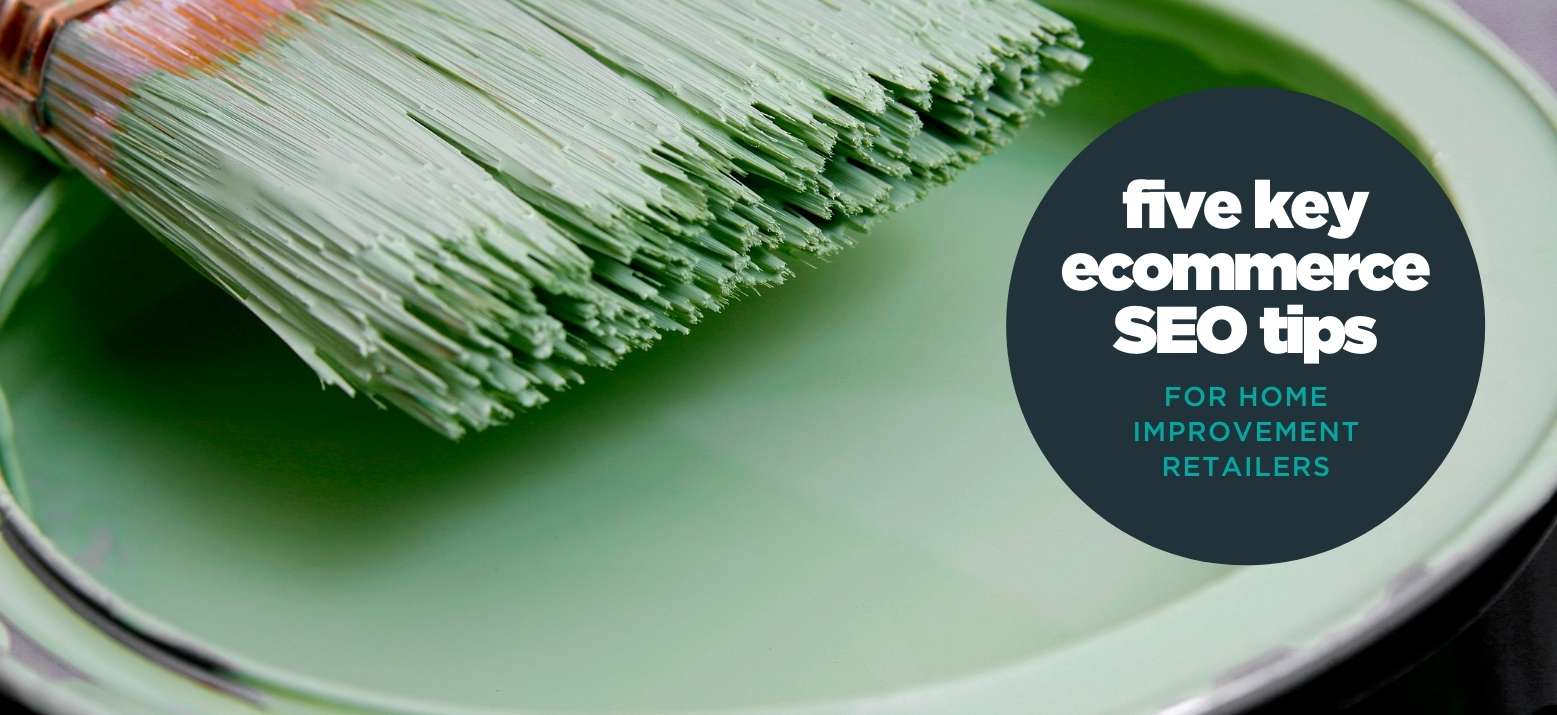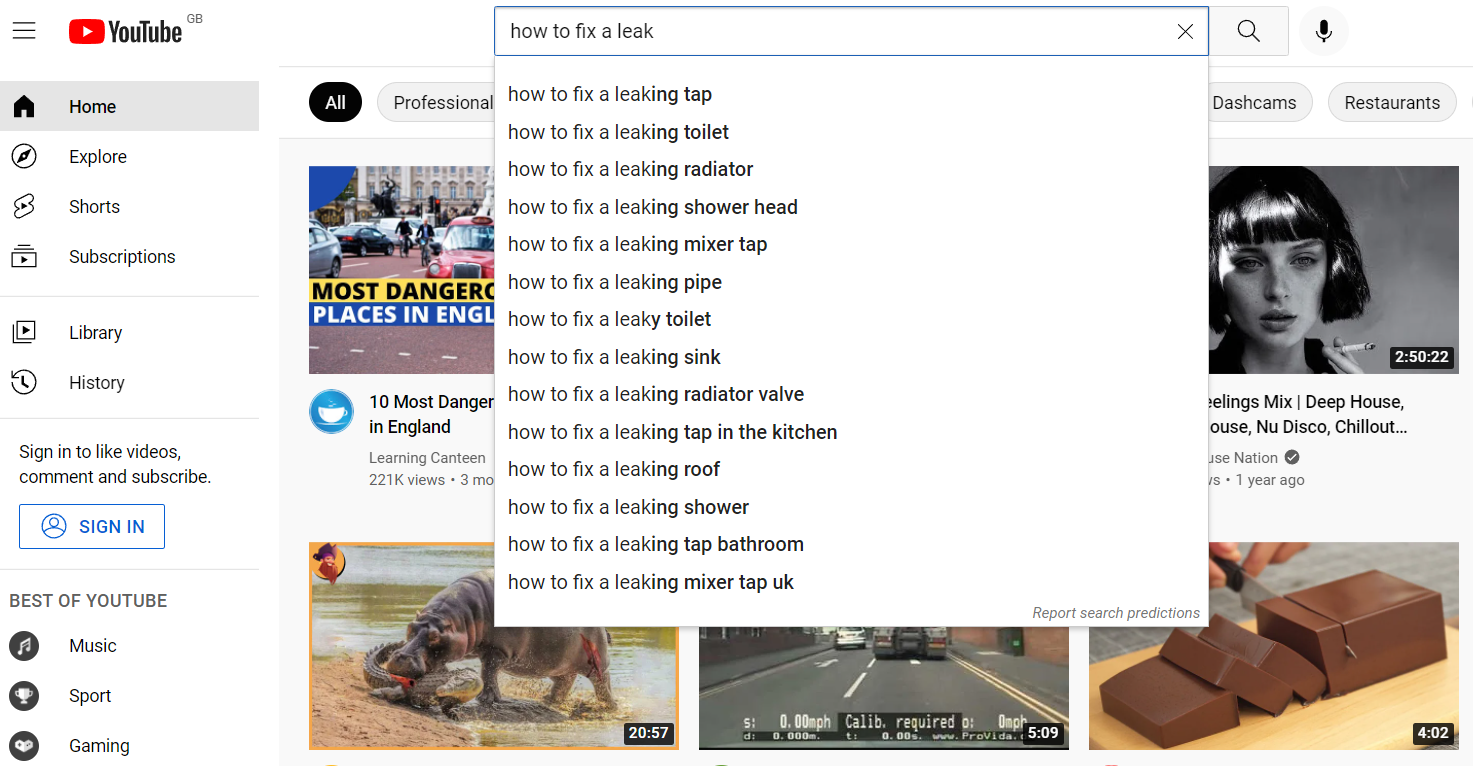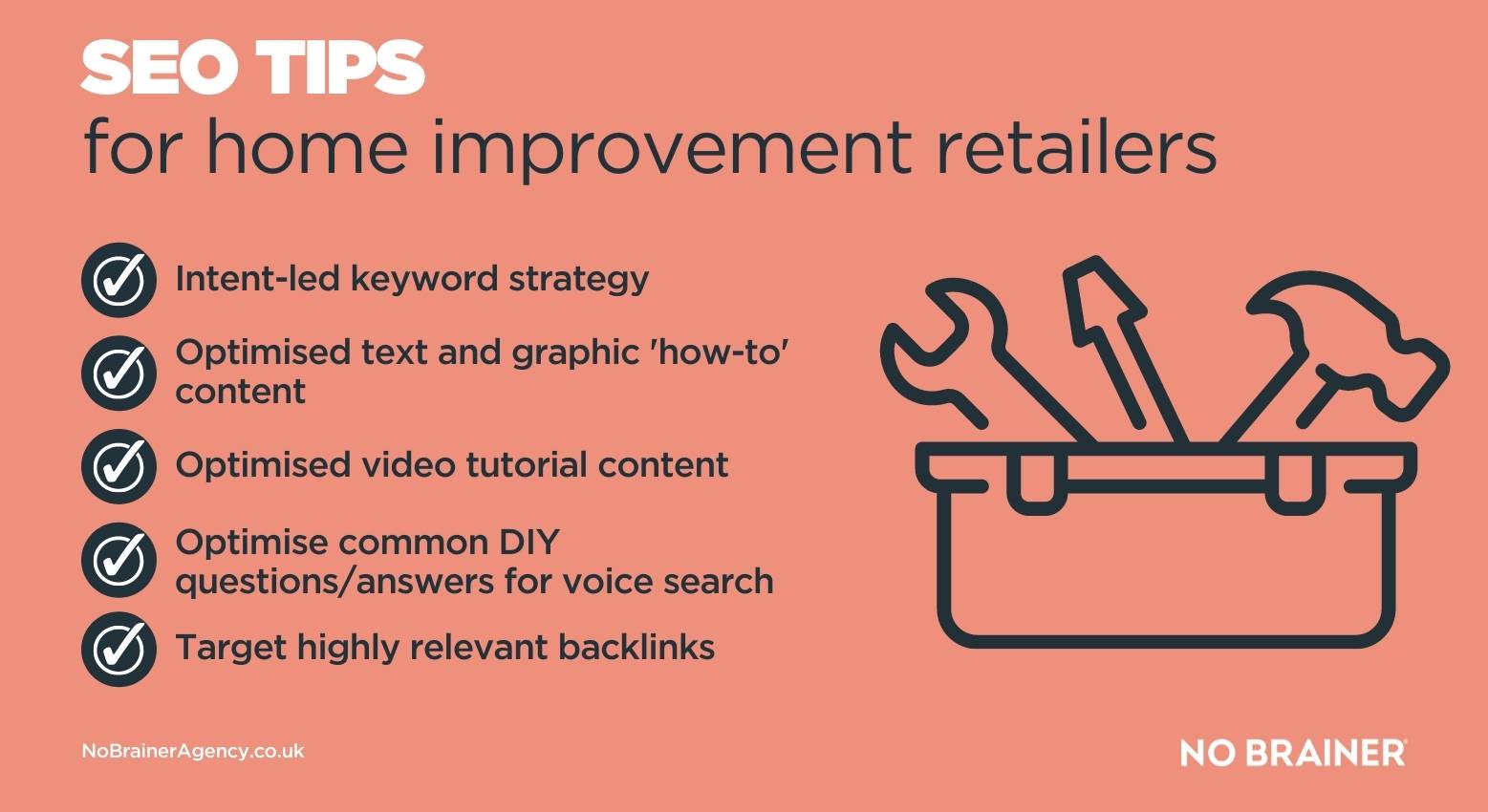If you’re an online DIY store helping homeowners to maintain and improve their property, helping tradespeople with the supplies they need to run their business or a retailer that offers products to revamp homes and gardens in other ways, you’ll already know the importance of organic visibility in search engine results.
Unless you are one of the main players already established in this sector, a B&Q, Screwfix, Wickes or Homebase or similar, you need to find ways to compete for online sales in a really crowded marketplace when your brand name might not be widely known and trusted already, which adds another dimension to your marketing objectives.
Attracting relevant traffic to your website is essential and covering the SEO basics will provide a great foundation for this, but there are further SEO considerations for retailers in this sector which could help you gain a competitive edge, increasing organic traffic and the revenue it generates.
We’ve compiled some key tips for ecommerce SEO in the home improvement sector based on the ways in which people search, and what for, when looking for the kinds of products that you sell.
1. Intent-led keyword optimisation for home improvement retailers
Making sure that you take the intent behind searches into consideration can have a huge impact on your SEO performance. Of course, you’ll want to attract potential customers who are at the decision phase of their buying journey because they are the most likely to result in a transaction. However, it’s also important to cater for your target audience at the other stages of their journey too, especially if you need to build brand awareness and trust. Mapping specific keywords to the intent behind them and the content on your site that can best meet the needs of the user with that intent can be a real game-changer.
Key types of search intent
- Transactional: you can quickly spot these types of queries as they often include such terms as “buy”, “cheapest”, etc.
- Informational: this is gold-dust for SEO, and include queries used when a user is researching topics and products – think “how-to’s”, “kitchen decor ideas”, “best types of paint for bathrooms” and more.
- Navigational: these are usually brand-related, and does as it says on the tin – it could be “Facebook login”, “B&Q contact”. Users are looking for something specific from a brand, whether it’s finding them on social platforms, connecting with customer service, or even getting directions to their local branch.
Adjust your content planner for SEO, so it not only incorporates keywords, but intent and stage of journey. Obviously intent will alter your keywords, but by making it clear in your brief – you’ll craft a piece that’s nuanced enough to engage with your audience at exactly the right time (and carefully nudge them to the next stage of their journey).
Take a look at our guide to ecommerce keyword research here for more on developing an intent-led strategy.
2. Create text ‘how-to’ tutorial content for DIYers
A recent survey revealed that people in the UK use search (either via a search engine or voice search) up to 30 times a day on average, with DIY tips and ‘how-to’ information one of the most popular types of search.
This kind of search is fairly top of the funnel in some ways, but for a retail brand selling products that make part of a solution to the problem that the user is trying to fix, it’s not as big a leap as it might be in other types of ecommerce business. Detailing how someone can use a product you sell in the tutorial, along with including CTAs in the content, help ensure that not only does the user get an answer to their DIY problem, they also get a good look at a product or range that can do the job.
Creating text content for the guide is a straightforward way to make that content easy for search engines to understand, and interspersing this text with search-optimised images or graphics to illustrate every stage of the process provides a valuable user experience to site visitors.
Bringing things back to the intent-led keyword strategy, don’t forget to include prefixes such as ‘fix’, ‘replace’, ‘mend’, ‘repair’ and other relevant terms into your strategy for these pages.
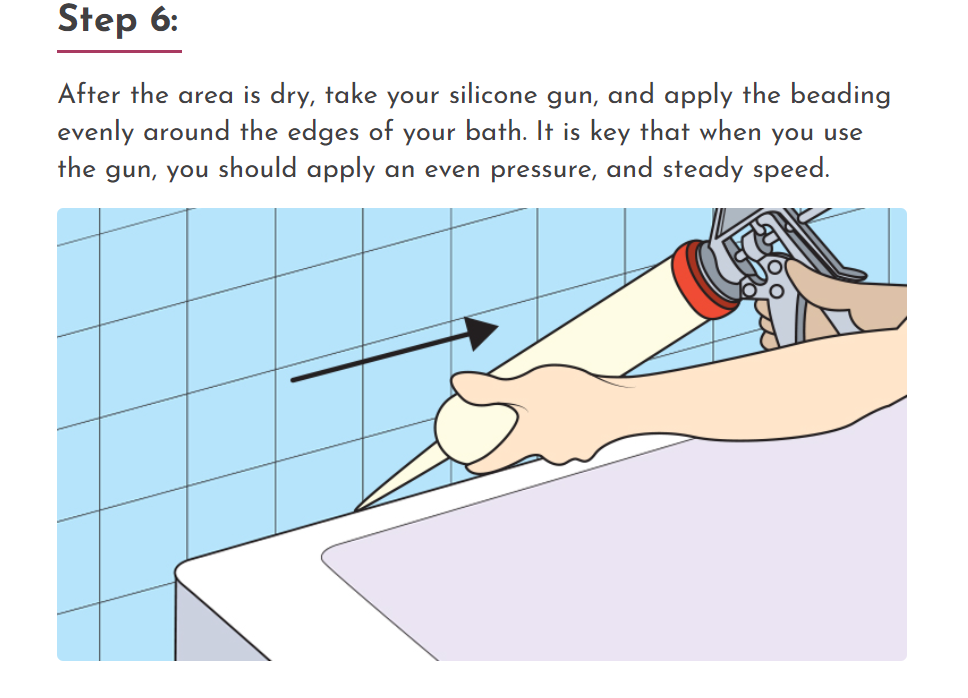
3. Create optimised video content for DIYers
YouTube is the go-to search engine for DIY tutorials.
While sending traffic to YouTube rather than your own website is counter-intuitive from an SEO point of view, the additional visibility you can gain by using your video content on this platform can sometimes outweigh the benefits of hosting it exclusively on your website, especially in the context of this particular ecommerce sector.
So, optimising the video how-to tutorials you create (with some heavy product placement ) as best you can to send traffic from YouTube back to your site is important. The basics of YouTube optimisation include:
- Using a video file name that includes a keyword (which will often just be the problem you’re solving)
- Using keywords in the video description, including a link back to your website’s version of the tutorial (as in the above tip) and product links for anything featured as part of the solution
- Use the tags and categories to incorporate keywords and relevancy to the subject matter/audience
- Embed the video on your website text tutorial page too, and use Schema markup on that page to help boost visibility even more
Voice search optimisation for home improvement retailers
As mentioned earlier, people do use voice search for questions and problems they might experience with their home. So it can be beneficial for your home improvement website to incorporate some voice-search optimised content to maximise your chances of being used by one of the voice assistants or mobile apps.
Finding out which questions and problems are the most common for your audience, in relation to the products that you sell, is a good place to start. This will usually take the form of FAQ content, which is ideal for tutorial or guide pages on your website, or even product pages if appropriate. Find out more about optimising your ecommerce site for voice search, including formatting questions, answers and using Schema to maximise organic visibility.
Target the most relevant sites to earn links from
It’s very well documented how important links are to SEO for any online business, essentially acting as a vote of confidence that the page being linked to is useful and of value to users. The stronger the website that links to yours, the more beneficial to your SEO performance.
For online retailers in the home improvement space particularly, it’s a good idea to have a real mixture of links as you’re likely to have at least two main audiences; consumer and trade, and it’s important to ensure there is some balance in your strategy. Getting together a list of online media and publications that influences these audiences is a vital step, as that not only helps from an SEO point of view, but the relevance has additional value in itself. If these sites that link to yours send any referral traffic, it’s likely that these users will be essentially pre-qualified visitors and are primed to convert into customers.
Using Digital PR as a tactic to connect with your audience, and importantly, the media outlets they consume, with the goal of earning powerful links to your site is a great way to build your backlink profile, along with other activities that might include:
- Strategic guest posts written for relevant and influential websites
- Creating useful infographic content that people think is worth linking to
- Creating useful resources or guides that are link-worthy
- Reclaiming lost links or following up unlinked mentions
- Asking relevant sites with broken links to replace that link with one to an appropriate page on your site
- Repurpose existing content into more linkable formats
A vital piece of the jigsaw is to ensure you are taking steps to track ecommerce SEO performance, both as a benchmark before you make changes and addition to your website and activity, and also to help prove the value of SEO to the business. You can then tweak your strategy as required to help ensure the best possible ROI, now and into the future as your business grows and evolves.
If you’d like some help or advice with your home improvement ecommerce SEO then we’d love to have a chat with you. Get in touch with the team using the form below.

